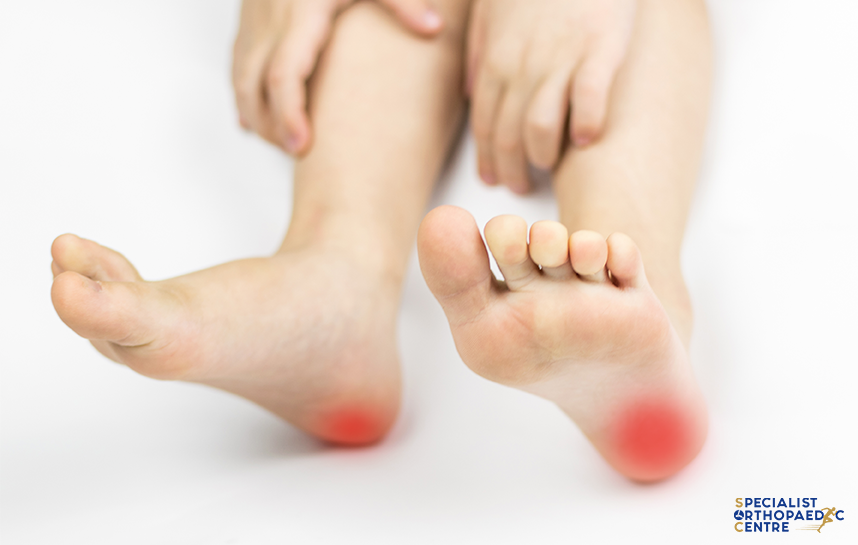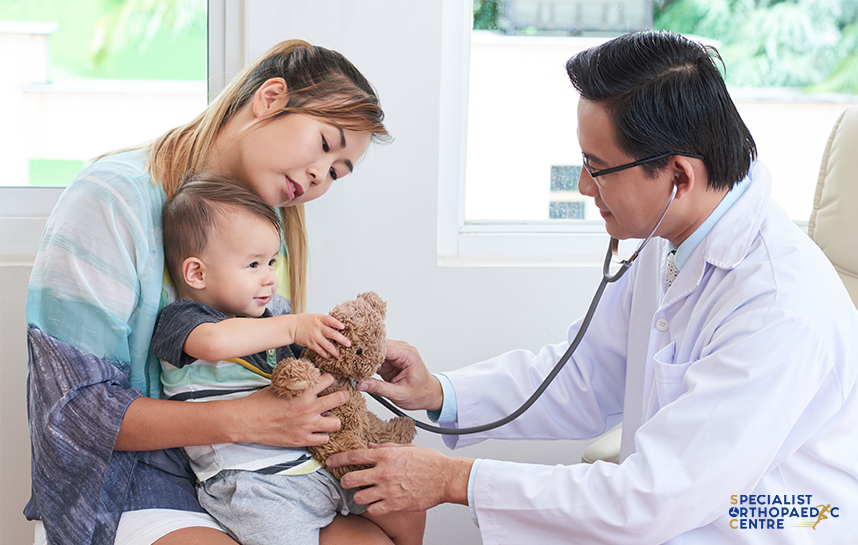‘Pediatrics’ is a commonly used term in the medical landscape. It revolves around medicinal practices and treatments relating to children’s diseases. A pediatrician is a medical doctor trained to manage such health problems, helping infants, children and young adults heal from their respective conditions. While pediatricians may be the first option when it comes to treating children’s medical conditions, some orthopaedic specialists are well-versed in providing support as well. Orthopaedic doctors are adept in treating the bones, joints, tendons, ligaments and muscles. Should your child experience conditions in these areas, you can consider taking them to an orthopaedic doctor instead. Here are some of the common pediatric conditions orthopaedic clinics in Singapore can help to treat.
Pediatric Fractures

When a child (under 18) cracks or breaks their bone, this condition is known as a pediatric fracture. Children who tend to be highly active and frequently engage in sports may be more prone to sustaining such injuries. Finger, elbow and ankle fractures are some of the more common pediatric fractures children may get. Engaging in activities including skateboarding or riding a scooter can lead to such fractures, especially without proper protection gear. In most cases, orthopaedic clinics treat pediatric fractures with a sling, splint, brace, cast or walking boot, depending on the condition and the region where the fracture occurred. This helps to keep the bone in position so that it can heal more quickly and effectively.
Flat Feet

Flat feet in Singapore is a medical condition where the natural arch on the soles of our feet are flattened. While this condition may not affect all negatively, others may experience symptoms including foot pain or swelling along the inside of the ankle. For young children, flat feet is a part of the growing process. Most toddlers will have flat feet because their bones and joints are flexible and the inner foot tendons and the Achilles tendon that produces the arch shape is still developing. Typically, they should outgrow flat feet at the age of six and treatment may not be necessary if there are no symptoms present. When it comes to treatment options, an orthopaedic doctor may recommend arch supports that fit into your child’s shoe for added support or physical therapy to stretch the Achilles tendon. In severe cases of flat feet, a simple day surgical procedure which involves inserting a stent into the foot helps prevent arch collapse and maintains the arch in children.
Heel Pain

Experiencing heel pain is common among children and it is usually associated with injuries such as Achilles tendinitis and Sever’s disease. These conditions occur due to overuse of the Achilles tendon. Constant running and jumping movements may increase the risk of heel pain in children. At times, Sever’s disease stems from a sudden growth spurt. When the heel bone grows at a rapid rate, it becomes inflamed as the surrounding muscles and tendons are not accustomed to handling this pressure change. To alleviate pain and discomfort, your orthopaedic doctor in Singapore may ice the area, stretch out the calf muscles, prescribe pain medications or introduce cushioned heel lifts. Plenty of rest is also advisable until a full recovery has been made.
Growing Pains
Between the ages of 8 and 15, a significant growth spurt is inevitable. Occasionally, growing pains may ensue, leading to cramps and aching muscles felt in the legs. While its name suggests that growing pains result from growth spurts, it can also be caused by rigorous activities without sufficient rest that wear out the muscles including running, jumping and climbing. Every child experiences growing pains differently in terms of frequency and pain tolerance. Generally, growing pains is not a serious condition and can be treated with home remedies such as massages or heating pads. However, should symptoms of loss of appetite, swollen joints or rashes be present, it is ideal to seek the advice of an orthopaedic doctor.
Above are just some of the many pediatric conditions certain orthopaedic clinics in Singapore are well-positioned to manage. Bear in mind that treatment is dependent on each child’s unique condition and it is best to consult a pediatric trained orthopedic doctor for advice.
Want to learn more about pediatric and orthopaedic conditions and treatment options? Contact us today for more information and we will be happy to help!


